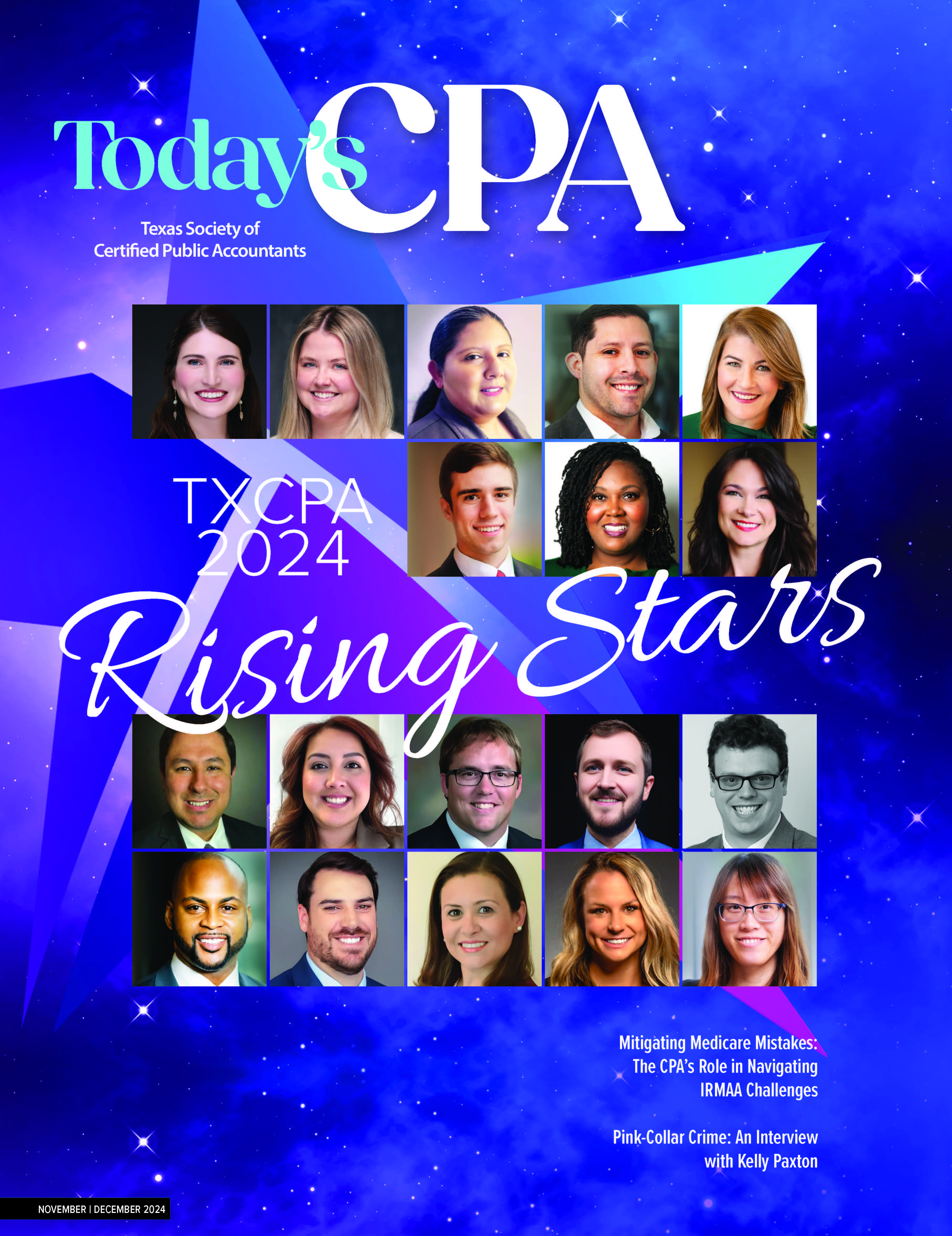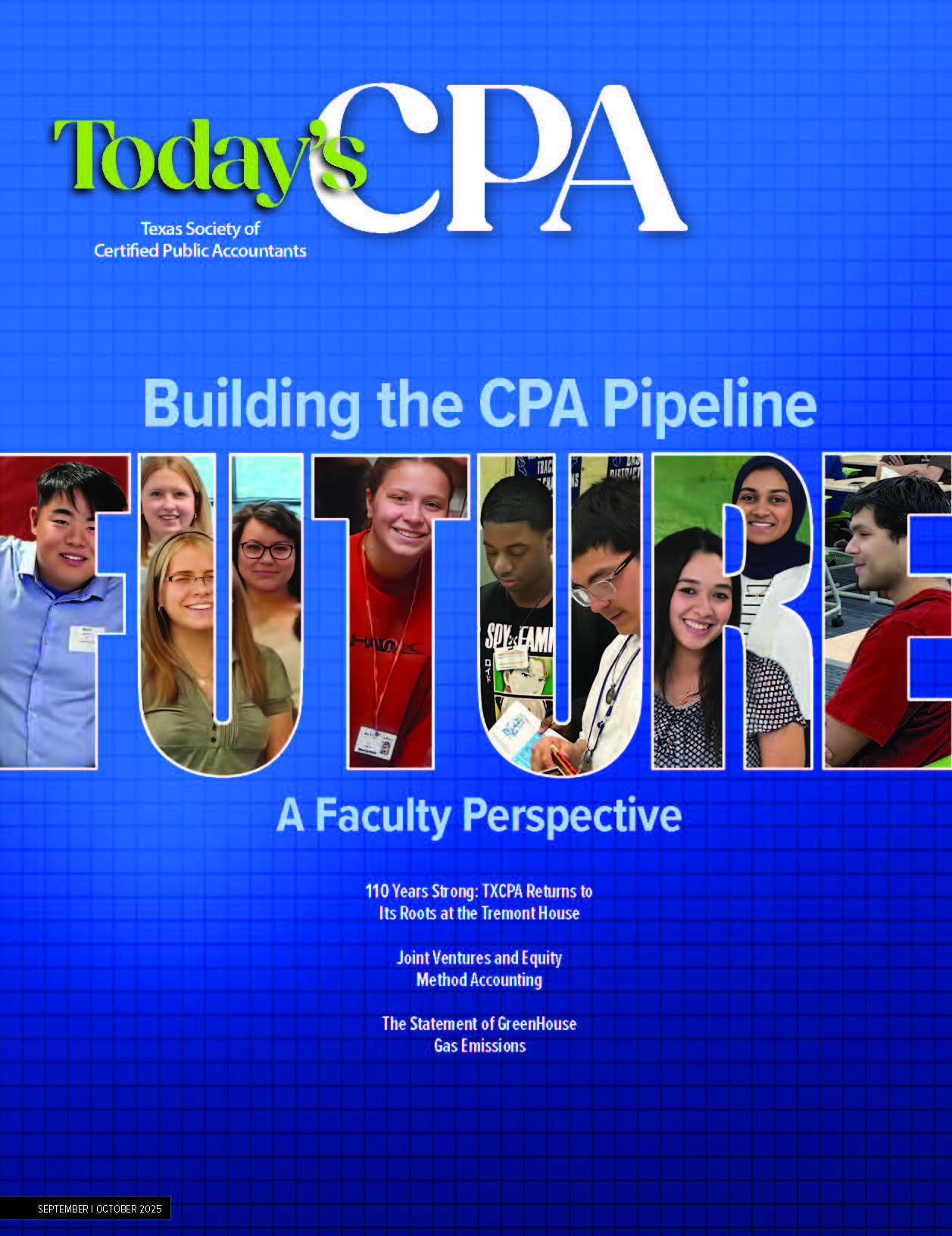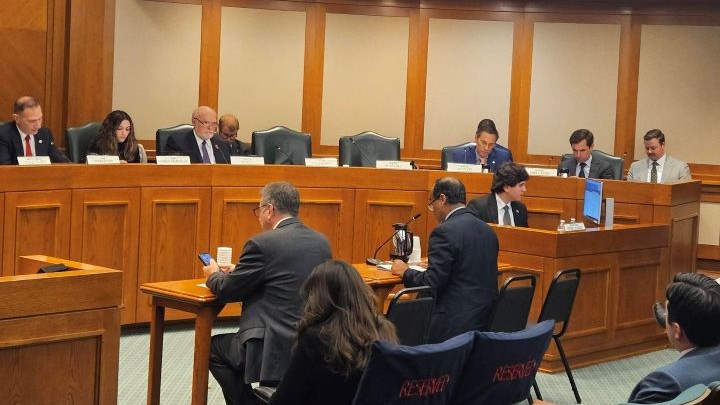November 01, 2024
CPE: Update on Financial Reporting for Joint Venture Formation
By Barbara W. Scofield, Ph.D., CPA
~~ ~~ ~~ ~~ ~~ ~~ ~~ ~~ ~~ ~~ ~~ ~~ ~~ ~~ ~~ ~~ ~~ ~~ ~~ ~~
CPE Self Study Article & Quiz Register to gain access to the self-study quiz and earn one hour of continuing professional education credit by passing the quiz.
~~ ~~ ~~ ~~ ~~ ~~ ~~ ~~ ~~ ~~ ~~ ~~ ~~ ~~ ~~ ~~ ~~ ~~ ~~ ~~
CPE Hours: 1
Curriculum: Accounting and Auditing; Management
Level: Basic
Designed For: CPAs in business and industry and public practice
Objectives: To present what financial officers will need to know to meet the new standards for joint venture formation and how issues of goodwill and other private company alternatives allowed in GAAP interact with these new standards
Key Topics: GAAP for joint venture formation through ASC 2023-05; joint ventures defined; financial reporting for formation; private company alternatives; transition issues
Prerequisites: None
Advanced Preparation: None
~~ ~~ ~~ ~~ ~~ ~~ ~~ ~~ ~~ ~~ ~~ ~~ ~~ ~~ ~~ ~~ ~~ ~~ ~~ ~~
Joint ventures enable companies to combine their resources and technologies in creating new facilities, new products or services, or new markets for goods. Their ubiquity is confirmed looking at just the public companies headquartered in Texas on the Fortune 5001 list for 2024; 77% of these companies include disclosures about their joint ventures in their most recent SEC annual filing (41 out of 53). Moreover, of the 26 energy industry companies on that list, 92% presented information on joint ventures. New joint ventures are announced monthly in the business media. For example, on June 14, 2024, the Wall Street Journal announced joint venture formation by both Stellantis and Zhejiang Leapmotor Technology2 for automobile manufacturing and WHP Global and Simon Property Group, Brookfield Properties, and Centennial Real Estate3 for operating retail properties in malls.
The Financial Accounting Standards Board (FASB) has issued Accounting Standards Update 2023-03 (ASC 2023-05) to fill a gap in generally accepted accounting principles (GAAP) by providing standards for financial reporting for the formation of joint ventures. This article will present what financial officers will need to know to meet the new standards for joint venture formation and how issues of goodwill and other private company alternatives allowed in GAAP interact with these new standards.
Joint Ventures Defined
Joint ventures share risks and rewards in developing a new market, product or technology; combine complementary technological knowledge; or pool resources in developing production or other facilities. The Master Glossary of the Codification® includes this definition of joint ventures, which is preserved from previous GAAP:
An entity owned and operated by a small group of businesses (the joint venturers) as a separate and specific business or project for the mutual benefit of the members of the group.
Joint ventures are distinguished from subsidiaries that are under the control of a parent company and from collaborative arrangements that are joint operating activities, sharing risk and return, but not establishing a separate legal entity. Joint ventures can be organized as partnerships or corporations and can even include a minority interest by a governmental entity. Joint ventures can have subsidiaries, but those subsidiaries are not themselves joint ventures.
Financial Reporting for Joint Venture Formation
Joint venture formation has definitive accounting standards established with Accounting Standards Update 2023-05 Business Combinations – Joint Venture Formations (Subtopic 805-60) (ASU 2023-03) that will be effective for all entities on January 1, 2025. Issued in August 2023, this addition to GAAP brings comparability to a topic that had no prior definitive guidance and a diversity of practice.
The new guidance adapts GAAP for business combinations to the formation of joint ventures, taking into account the unique costs and benefits involved in preparing and using the financial statements of joint ventures. Thus, the complete GAAP for joint venture formation is unlikely to match the actual practice of accounting for any joint venture prior to the issuance of ASU 2023-03.
ASU 2023-05 requires that a joint venture measure its initial net assets at fair value on the date of formation. Both fair value and date of formation are familiar concepts but are applied here specifically to joint venture formation.
The date of formation of a joint venture is the date on which the definition of a joint venture is met. Since the formation of a joint venture may be a result of agreements among more than two parties, there can be multiple transactions that together result in the founding of a joint venture. FASB provides guidance in ASC 805-60-25-4 for an entity to select a date of formation when there are multiple transactions involved. When multiple events are considered part of the formation, a single date of formation is selected and all designated transactions involved in the formation are recorded as of that single date.
The date of formation decision determines which net assets are part of the originating event and follow the new subtopic ASC 805-60 Business Combinations – Joint Venture Formations and which net assets are subsequent transactions that follow other relevant GAAP. This identification of the date of formation takes the concept of date of acquisition from business acquisition GAAP, which uses the similar concept of date of control, but it allows for a single date of formation even when the joint venturers combine at slightly different times, but in contemplation of each other. This flexibility in determining the date of formation guarantees that the contributed net assets at formation share a common basis of fair value.
All of the net assets combined at formation of a joint venture receive a new basis, primarily fair value, with exceptions that are similar to those allowed in business acquisitions. The definition used for fair value is “the amount at which an asset (or liability) could be bought (or incurred) or sold (or settled) in a current transaction between willing parties” from the ASC Master Glossary.
Any excess of the fair value of the joint venture as a whole over the fair value of the net identifiable assets is recognized as goodwill. Of course, there may also be a bargain present when the fair value of the joint venture as a whole is less than the fair value of the net identifiable assets. In this case, the bargain is recognized as an adjustment to additional paid-in capital of the joint venture, so that there is no reduction in the fair value of the net identifiable assets.
In a business combination, a bargain is a credit recognized in the income of the acquirer. However, on the day of formation, there is no acquirer and no income recognized in a joint venture formation. A direct adjustment to members’ equity provides an equivalent result.
This treatment of fair value has three significant differences from business acquisitions. In business acquisitions, one entity is the acquirer and the other is an acquiree, and only the acquiree’s net assets are reset to fair value. In a joint venture, none of the entities combining are considered an acquirer and all of the net assets contributed by every joint venturer are reset to fair value.
Secondly, the calculation of goodwill and bargains in a business acquisition is calculated based on the acquisition price paid plus any minority interest. Joint ventures have no acquisition price, so the calculation of goodwill and bargains is based on the fair value of the joint venture as a whole instead.
Thirdly, a joint venture may have goodwill and in-process research and development recorded as assets at formation without the contribution of a business to the new entity, an exception to all other goodwill and inprocess research and development origin stories in GAAP.
Joint venture formation accounting uses the guidance of business acquisitions for financial reporting areas in which similar factors are present. Joint ventures will have a measurement period in which they can adjust the allocation of value to the net assets. Adjustments to the values of individual assets and liabilities made within the first year as the management gains more information about its new net assets adjust goodwill or bargain without triggering gain or loss recognition.
In addition, joint ventures will recognize the same exceptions to fair value measurement of net assets contributed to the joint venture that are already codified for business acquisitions. These include the following:
- Income taxes
- Employee benefits
- Indemnification assets
- Reacquired rights
- Leases
- Contract assets and contract liabilities associated with revenue from contracts with customers, and
- Assets held-for-sale
Each of these exceptions are part of current guidance on business combinations in ASC 805-20-25 and the accounting for joint venture formation matches these practices.
Joint venture formation accounting authorizes unique guidance where joint venture formation and business acquisitions differ. First, share-based payment awards that are classified as equity are treated differently when they are contributed to a joint venture. These awards are continuing contracts. The portion of the award already earned is recognized as a component of equity with no impact on the valuation of the net assets in the joint venture.
Secondly, contingent payments present at formation that are classified as assets or liabilities are measured at their fair value at the date of formation, since there is no acquisition price paid from one entity to another.
Thirdly, joint ventures in construction and oil and gas that have had a specific industry practice of using proportionate consolidation are excluded from the joint venture formation guidance. This exception, however, is not as broad as it might seem. Proportionate consolidation of a joint venture is allowed:
in either the construction industry or an extractive industry . . . [A] entity is in an extractive industry only if its activities are limited to the extraction of mineral resources (such as oil and gas exploration and production) and not if its activities involve related activities such as refining, marketing, or transporting extracted mineral resources. (ASC 930-810-45-1).
Thus, many joint ventures in the oil and gas industry will not meet this narrow scope limitation and will be subject to the new guidance on joint venture formation.
Private Company Alternatives and Joint Ventures
Most joint ventures are private enterprises, which means that they are eligible to take advantage of a list of seven private company alternative choices available in current GAAP. These private company alternatives are tailored to the needs of companies with more involved owner-management, benefiting from the simplifications and lower costs without diminishing information for decision-making. However, selecting these alternatives should be analyzed carefully if adjustments to public company GAAP when the joint venture is consolidated with a public company or when the joint venture has an initial public offering anticipated.
The accounting alternatives available in GAAP for a private company joint venture at formation are the following:
1. A joint venture with goodwill may elect to amortize goodwill on a straight-line basis over the shorter of its useful life or 10 years. (ASU 2014-02/ASC 350-20-35-63)
2. A joint venture selecting amortization of goodwill may choose to test goodwill for impairment at the entity level, rather than at the reporting unit level (ASU 2014-02/ASC 350-20-35-65)
3. A joint venture selecting amortization of goodwill is not required to test annually for goodwill impairment but can undergo impairment testing only at the time of a triggering event. The joint venture would use the same qualitative and quantitative tests used for goodwill impairment testing by public companies. (ASU 2014-02/ASC 350-20-35-66)
4. A joint venture selecting amortization of goodwill may elect to subsume some intangibles into goodwill rather than recording them separately. Specifically, noncompete agreements and customer-related intangibles that are not separable through purchase or licensing would not be recorded as individually identifiable intangibles if this private company election is selected. (ASU 2014-18/ASC 805-20-25-30)
5. A joint venture may elect to use a simplified accounting for cash flow hedges of interest rate swaps that meet specific criteria when converting variable rate debt to fixed rate debt. This choice allows the company to measure the designated swap at settlement value instead of fair value. (ASU 2014-03/ASC 815-10-35-1A)
6. A joint venture that is a lessee may elect to not apply Variable Interest Entity assessment to determine whether a lessor entity under common control should be consolidated. Specific criteria on the lease arrangements are required for this alternative to be available. (ASU 2014-07/ASC 810-10-15-7A)
7. A joint venture that issues share-based awards may select a practical expedient to use reasonable valuation methods, such as those in Treasury Regulations Section 409A, to estimate fair value of the share-based awards. (ASU 2021-07/ASC 718-10-30-20C)
Transition
The new GAAP described here is effective for all joint ventures formed beginning January 1, 2025. Early adoption is permitted for any unissued financial statements. Joint ventures formed before January 1, 2025 may apply this financial reporting guidance retrospectively, but they are not required to do so. Joint ventures should carefully evaluate whether full fair value information is readily available when considering changing to ASC 2023-05 standards for previously formed joint ventures.
Summary
FASB has created a consistent and decision-useful GAAP for joint venture formation through ASC 2023-05. It aligns joint venture accounting closely with acquisition accounting by requiring a new basis for the net assets contributed. Moreover, ASC 2023-05 relaxes some principles present in acquisition accounting in order to provide clear, streamlined financial reporting that benefits both preparers and users of financial statements of joint ventures. The new guidance on joint venture formation adds a valuable chapter to GAAP.

About the Author: Barbara W. Scofield, Ph.D., CPA, is Professor of Accounting in the School of Business at Washburn University. Contact her at barbara.scofield@washburn.edu.
Footnotes
1. https://fortune.com/ranking/fortune500/
Thanks to the Sponsors of Today's CPA Magazine
This content was made possible by the sponsors of this issue of Today's CPA Magazine:




















